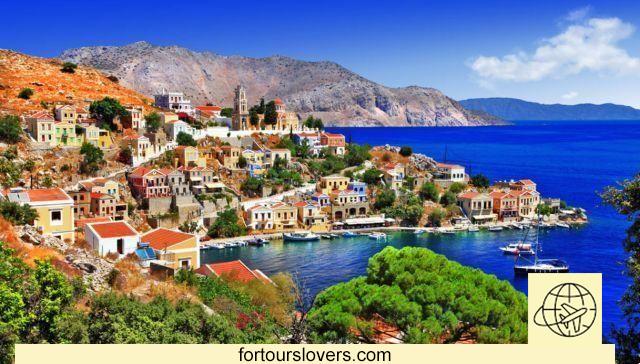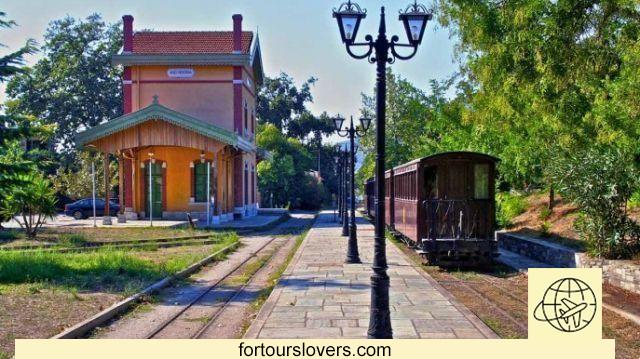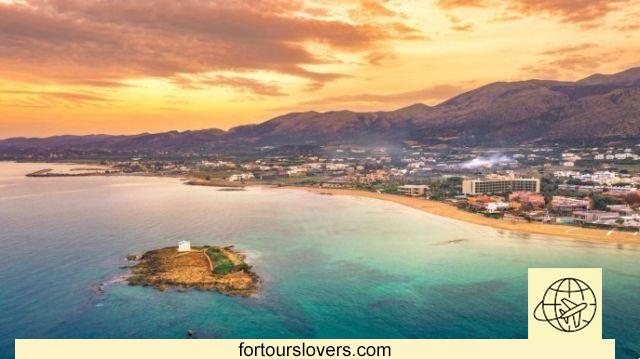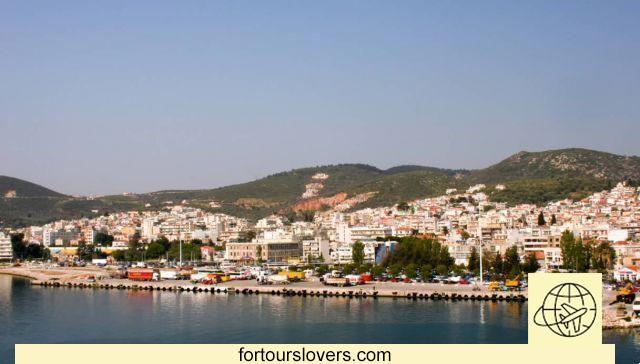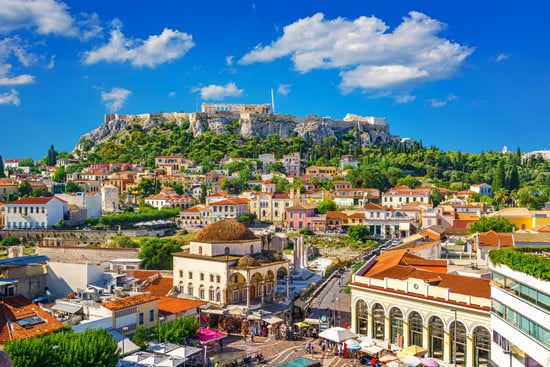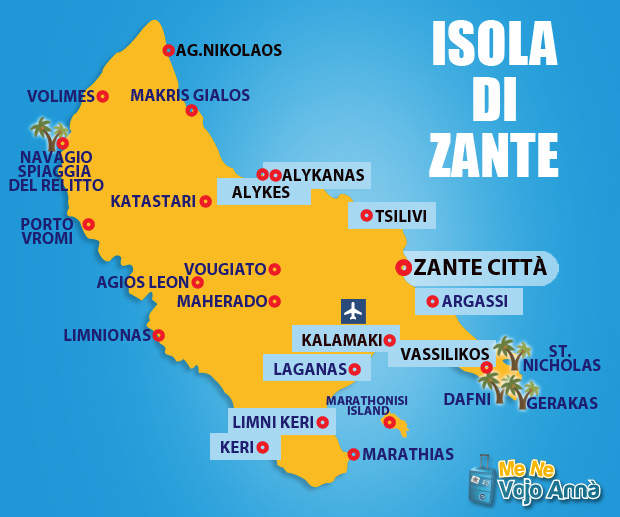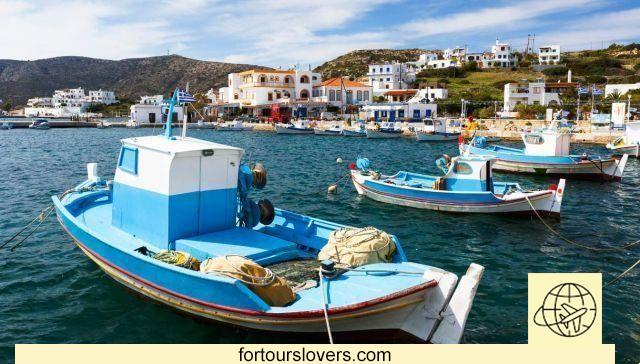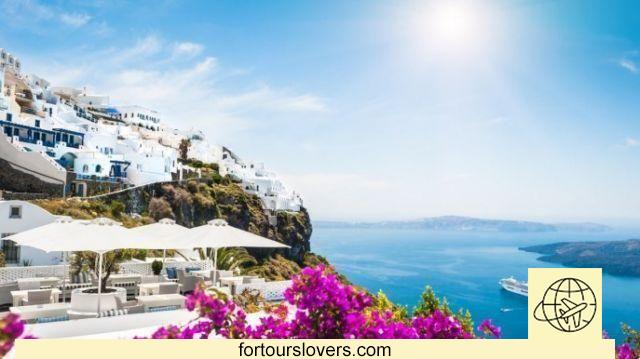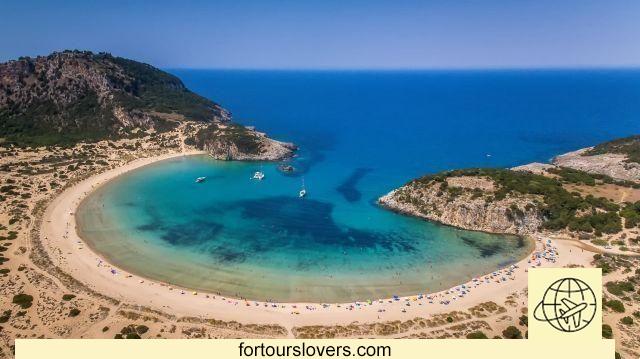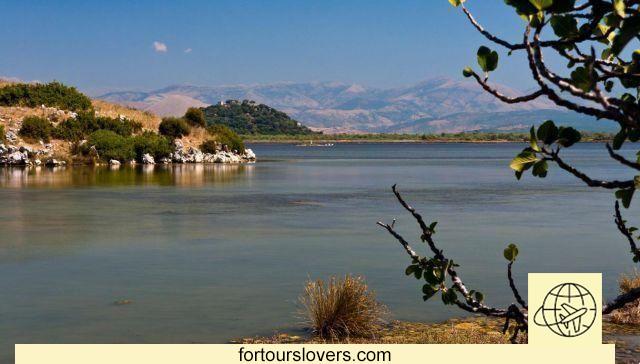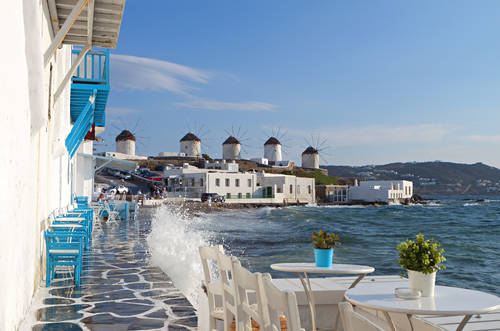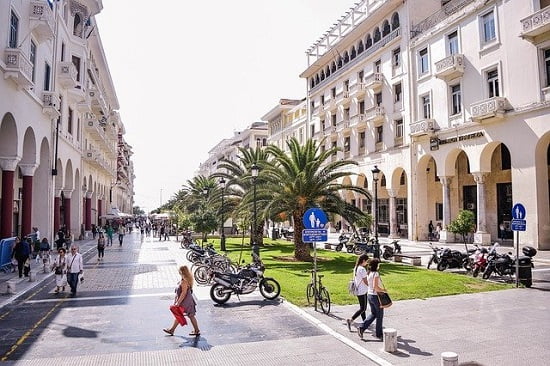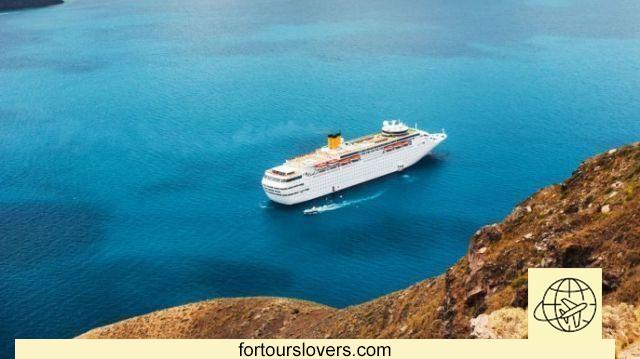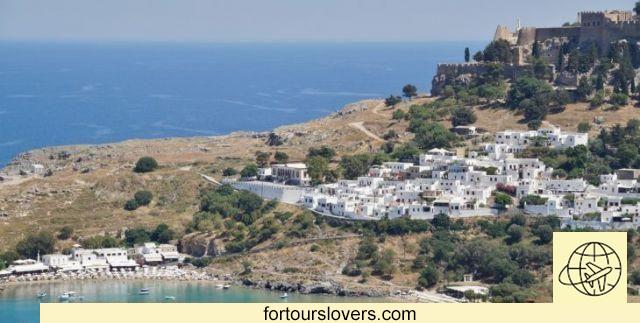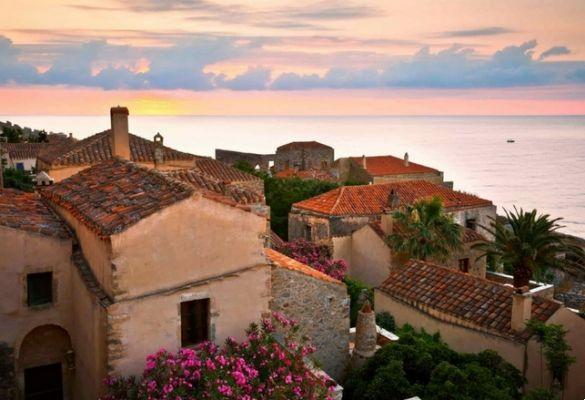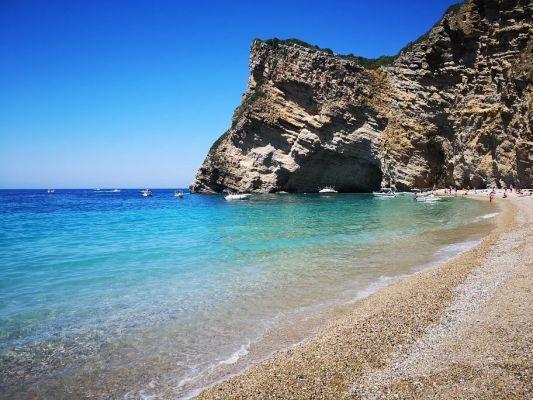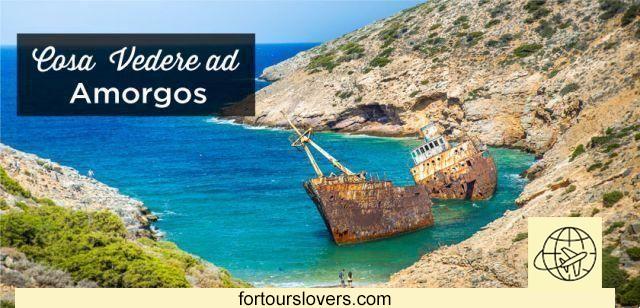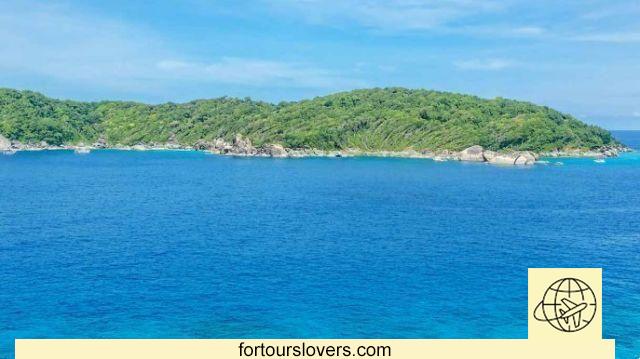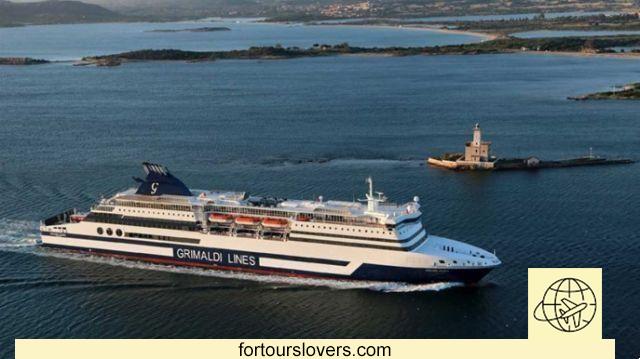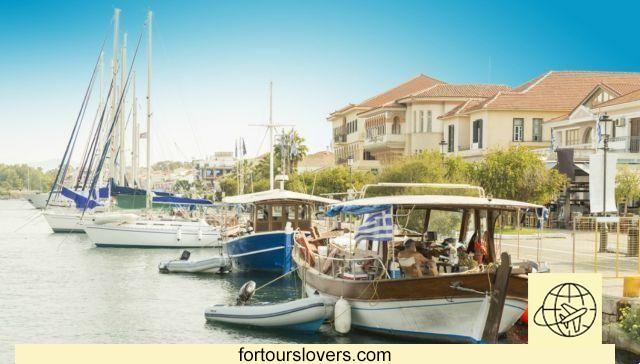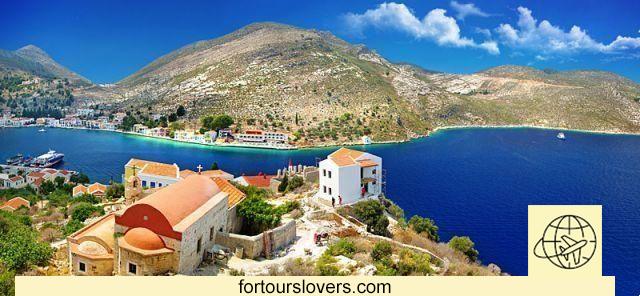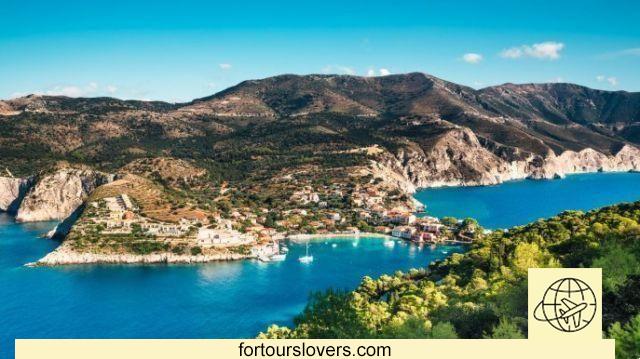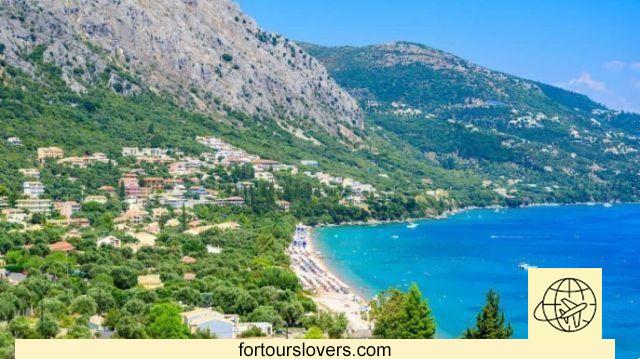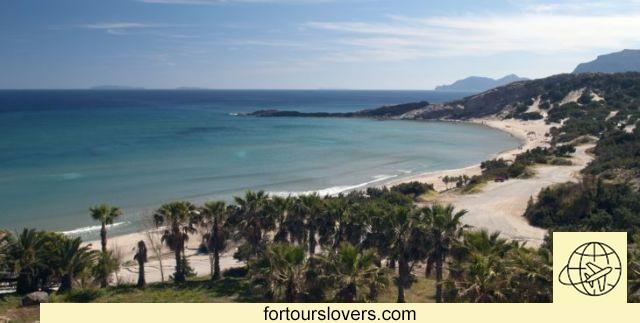
Kos
11 things to do and see in Kos and 1 not to doSecond island of the Dodecanese (after Rhodes) and fourth for number of visitors from all over Greece (after Crete, Rhodes and Corfu), Kos offers everything you would normally expect from a Greek island: sea, beaches, nightlife, Mediterranean scrub, good food, history, culture and archeology. In short, the distance between imaginary and reality is not so marked, which explains the tourist fortunes of this island where just over 30.000 inhabitants live. To tell the truth, Kos' positive reputation is also due to far-sighted political choices. Here, in fact, for some years now there has been a strong focus on environmental sustainability, acting on several fronts: water purification; strengthening of public means of transport; promotion of the use of bicycles; protection of flora and fauna; safeguarding of pastoralism; enhancement of outdoor activities (in particular free climbing). Obviously, there is no lack of difficulties. The financial crisis that hit Greece in 2011 also made itself felt here. The difference, however, is that the beauty of the landscape and a certain indolence in dealing with everyday life partly mitigate the problems that afflict the population. Below we see together the main attractions of Kos. Happy reading.
1 Kos Town
Kos Town, the homonymous capital of the island, is the natural one starting point for discovering the area. Here, on the slopes of mount Dikeos, lives more than half of the resident population (approx. 19.000 inhabitants). The port is main hub for the local economy both from a tourist and a commercial point of view. Ferries, hydrofoils and catamarans dock under the medieval fortress (see next point), built, as in Rhodes, by the Knights of the Order of St. John. Sailboats and yachts, on the other hand, dock at the Mandraki marina, behind which extends the historic center with the squares, the remains of the ancient Agora, the Archaeological Museum and of course bars, restaurants, boutiques and souvenir shops. To be seen Platáni, the neighborhood where the Greek Muslim minority lives (see point 5), e Lapped, the most advanced tourist district of the municipality (see point 10). Kos Town - also here in analogy with what happened in Rhodes - architecturally owes a lot to the Italian thirty years (from 1912 to 1943). It was the Italians, in fact, who enhanced both themedieval architecture than to lead many of the Archaeological excavations which have brought to light the Greco-Roman remains.
2 Roman House
On April 23, 1933, an earthquake shook Kos, causing hundreds of victims and razing much of the city to the ground. The unfortunate circumstance, however, had a positive implication: by removing the rubble, in fact, numerous traces of antiquity appeared up to that time covered by the modern town. Among these, one patrician villa of the III century AD. C., precious testimony of the luxury in which the Roman aristocracy stationed on the island lived. The excavation work was conducted by the Italians who ruled Kos at the time. The discovery of a Roman house it represented a formidable opportunity for fascism: by reconstructing the building, in fact, Mussolini's regime did not hesitate to update the glories of the Roman Empire, which, moreover, was based on since the beginning of the colonial experience. From this we understand why the restructuring was not only conservative, and indeed in some parts the ideological message prevailed over historical truth. Even so, however, the Roman House with its mosaics, the three internal courtyards, column dining room and l 'area dedicated to the spa represents an unmissable stop on a holiday in Kos.
3 Castle of the Knights
The fortress east of the Mandraki marina is one of the main attractions of Kos. Its construction is prior to the Knights of the Order of San Giovanni although, undoubtedly, it was the latter who fortified the building. Just like in Rhodes, it was a question of protecting Christians en route to Jerusalem by guaranteeing them adequate shelter in case of stopover. The construction of the castle took place at different times: at the end of the 1912th century, after a violent attack by the Turks, it was in fact necessary to extend the walls, also digging a moat between the castle and the city. Precautions that, however, a few decades later, did not prevent the Turks from occupying the island anyway, giving way to a centuries-old domination that ended in 400 with the subsequent entry into the Italian scene. After about XNUMX years of neglect, it was the Italians who restored the castle of Kos, providing, in some cases, also to change the state of the places. For example, the moat was filled and decorated with numerous palm trees that soon became part of the surrounding landscape. The tour of the Castle of the Knights takes about an hour. Be careful not to forget your camera.
4 Odeon
If the discovery of many ancient remains of Kos was indirectly favored by the earthquake of 1933, that of the Roman Theater, however, dates back to a few years earlier (1929) and is the merit of the Italian archaeologist Luciano Lorenzi. Approximately built in the XNUMXst or XNUMXnd century AD. C., theOdeon it was used for both theater show that for musical and poetry competitions. The public was seated in the two sectors (upper and lower) of the steps. At the time of the excavations, galleries scattered with statues and various rooms used as workshops and shops came to light under the lower steps. In short, however small (max. 750 spectators), the Odeon of Kos was absolutely avant-garde by the standards of the time, further confirming the prosperity of the Roman colonists stationed on the island. Most of the sculptures found, including the most famous of Hippocrates (a native of Kos), are located at the archaeological Museum of the island, and therefore it is advisable to combine the visit of the two sites.
5 Platáni
The village of Platáni is located about 3 kilometers from Kos. Here lives a small Turkish-Muslim enclave with lots of mosque e cemetery stand alone. It must be said that before 1974, the year in which the Cypriot question exploded, there were many more residents than today. The invasion of Cyprus by the Turkish army provoked harsh reactions in the military junta in power in Greece in those years. Among these was the prohibition of the teaching of the Turkish language in schools, a discriminatory measure that prompted most of the inhabitants of Platáni to emigrate elsewhere. A little girl once lived in Platáni Jewish community. The Nazi occupation of the island in 1943 decreed its tragic extinction. Here too, in memory of the Jewish permanence, a cemetery remains (not open to the public). In short, the village of Platáni has repeatedly crossed history with a capital “S”, deriving much of its charm from here. The other part, however, is related to traditional turkish food proposed by the various inns in the area. To be seen!
6 Asklepieion
Asklepieion is the main archaeological site of Kos. However, at the time of Hippocrates who, we recall, was born and lived on the island, did not exist. There was certainly a small temple dedicated to Apollo and an altar dedicated to Asclepius himself (who was Apollo's son), but the actual sanctuary took shape only later, roughly from the XNUMXnd century BC. C. to the XNUMXnd century AD. C. During this long time span the island consolidated its economic position in the Aegean and also the medical precepts of Hippocrates, as well as the cult of Asclepius (Aesculapius, according to the Romans), found an ever wider echo in the Mediterranean. The greater popularity of the island, of Hippocrates and the god of medicine (Asclepius) suggested the expansion of the site with the construction of arcades, temples, colonnades and altars on several levels, connected to each other by stairs. Some of these structures had an eminently religious function; others, however, mainly clinical. It must be said that the two areas were not easily separated, since the medical treatments followed the indications provided by the patients who, in turn, however, had appeared Asclepius in a dream indicating the treatment to follow. In medieval times much of the material used for the construction of the temple was used to consolidate the fortresses around the island. Above all, for the fortress of the Knights of the Order of St. John that dominates the port. The result of this dispossession is that the path among the remains of the Temple of Asklepieion is above all imaginative, influenced by the timeless charm emanating from the place. Charm that suggested the inauguration of a Hippocratic Festival which for many years now has filled the summer events program (from June to August) of the island with theatrical performances, folklore, conferences on the figure of Hippocrates, and more generally on the antiquity of Kos. Not to be missed!
7 Embros Thermae
In Kos, you can also swim in winter if you wish. Just a sunny day (an event that is anything but remote) and a bathrobe for when you get out of the water. In fact, about 9 kilometers from the capital there is the Embros Natural Thermal Park. Just read the reviews on the net to understand what a wonderful place it is. A thermal hot spring enters the sea from the cliff behind the beach. The mixing between the warm water vein and the sea creates a suitable temperature for the balneotherapy. A bus shuttles daily between Kos Town and Embros, an unmissable place on a holiday in Kos. The only precaution: bring slippers or shoes suitable for the situation, because as you get closer to the source, the temperature of the water and the emerging rocks becomes incandescent.
8 Pýli
Those who want to know the less touristy, and therefore more authentic, part of Kos cannot help but visit Pýli. The town, just over 2000 inhabitants, is located in thehinterland of the island and in ancient times it was also its capital. The reason is easily understood: its sheltered position, far from the dangers of the coast, made the village an ideal destination to live in peace and, at the limit, to organize more effectively the defense against any pirate raids. Not surprisingly, the Knights of the Order of St. John restored the old Byzantine fortress, giving themselves another defensive outpost in addition to that of Kos town. Also worth seeing are the ruins of Old Pýli (Paléa Pýli), a medieval village inhabited until almost the middle of the nineteenth century and then abandoned following a cholera epidemic. Crumbling stone houses and a wonderful view that sweeps seamlessly down to the Turkish coast. Also in Pýli, finally, there is another archaeological find of great interest. We are talking about the tomb of Charmylyos, ancient king of Kos and progenitor of the island's lineage. It is a domed tomb (tholos) from the Hellenistic period where, in addition to venerating the legendary hero, people gathered to pray to the 12 gods of Olympus. In short, in Pýli lives the genius loci of Kos and therefore we highly recommend a visit if, in addition to the sea and nightlife, you are interested in learning more about the history and culture of the area.
9 Kefalos
After Pýli it is the turn of Kefalos, a town that takes its name from the peninsula that draws the southwestern side of Kos. The village, just over 1000 inhabitants on the Kamari bay, is a holiday resort devoted exclusively to the sea and the excursions that can be done all around. Those who want a more lively holiday can stop in Kardamena, just 8 kilometers away (a place frequented mainly by the British), or alternatively Kos Town which, however, is 40 kilometers away. In Kefalos, however, the atmosphere is still the genuine one of the past, and the merit is also due to a shrewd urban planning policy which, in part, has safeguarded the places from the invasiveness of tourist construction. Therefore, few accommodation facilities, few bars, few clubs but a crystal clear sea, according to most the best of the whole island. Among the different things to see, special mention for the Agios Stefanos Basilica and Agios Ioánnis Pródromos Monastery. The first is an ancient Paelocristian basilica and is located on the beach of the plain of Kambos, opposite the small island of Kastri where, in turn, there is a church dedicated to St. Nicholas. The monastery, on the other hand, is located in a fairly isolated position (as befits a place of hermitage) about 7 kilometers from Kefalos. Under the pressure of tourism it has become the classic place to go out of town, ideal for a picnic with relatives and friends.
10 The beaches of Kos
So far we have focused on archeology and specific locations on the island. The time has come to browse the beaches. There are many, one different from the other and, most important of all, the sea is almost everywhere of the highest level. Around Kos Town, the homonymous capital of the island, are the beaches of Lapped (approx. 4 km N) e Psalidì (3 km S). They are both very popular and characterized by the presence of numerous accommodation facilities, as well as bars, restaurants, shops etc. Halfway between Psalidì and Embras Thermae (see point 6) we find the beach of Agios Fokas, relatively less crowded than the previous two. Continuing south we meet Kardamena e Paradise Beach (see cover image at the beginning). These beaches, and obviously all the related activities that go around them, are in Kos a bit like Rimini and Riccione in Romagna. In other words, it is the mix of sea, fun and nightlife that makes them famous even if, it must be said, the quality of the water is excellent. In truth the whole stretch of coast of Kefalos it has several excellent beaches also in terms of services. Going up the northern coast, however, we meet Limnionas. It is a different beach than those described so far. Uncrowded, placid, it is ideal for spending a day of just sea and relaxation. Sea and relaxation also guaranteed a Mastichari, former fishing village famous for the excellent level of catering. After Mastichari it is the turn of Marmari e Tigaki, both at the top in terms of water baneability. Tigaki in particular is not to be missed. 10 km long, it is a beach suitable for everyone: families with children; to the young people; to the less young; to those who prefer equipped beaches; to whom, however, the free beach etc. Marmari and Tigaki also boast excellent views of both the Turkish coast and the nearby islands of Kalymnos and Pserimos.
11 Nissyros
Kos offers the opportunity to make several day excursions to discover the other islands nearby. Previously we mentioned Pserimos and Kalimnos, but woe to forget Nissiros. In fact, many believe that this islet of just over 1000 inhabitants south of Kos contains the true essence of Greece. THE organized tours leave from Kos Town, Kardamena e Kefalos but nothing prevents you from moving independently with them Ferries which in high season sail 4 times a week at a time Mandraki, capital of Nissiros. Obviously, in this case, it is necessary to plan a stop of at least one day, which is certainly a good idea considering the extraordinary landscape-environmental scenario of the island. A very fertile volcanic land with numerous thermal hot springs particularly indicated in the treatment of various skin diseases. Beyond Mandraki, the villages of Nikia ed Emporios, from an architectural point of view extraordinarily similar to Santorini. Not to be missed!
1 Pay attention to the price of fish
Fresh fish in Kos restaurants is expensive. In truth, it is a trend that affects all of Greece, especially the islands with the greatest tourist appeal. And it is precisely the crowding that suggests paying attention to the so-called ones as well "Tourist traps". Those restaurants, that is, that have the "Buttadentro" at the entrance, whose task is precisely to procure the greatest number of customers for the place.




